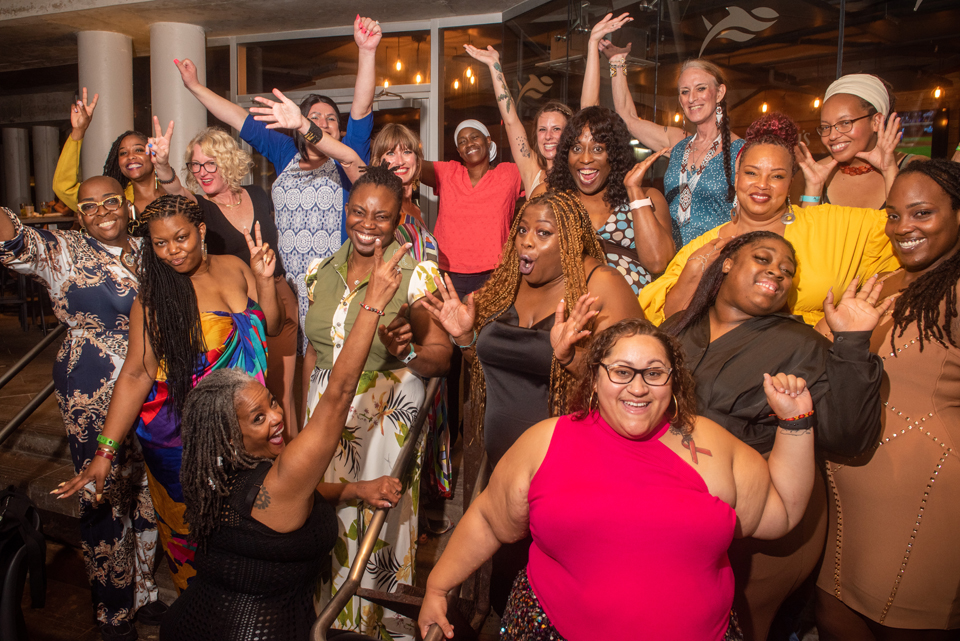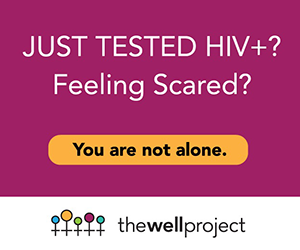
Jump to
- The current state of HIV cure research
- Impact of HIV cure research funding cuts
- Call to action
- Conclusion
Over the past four decades, HIV research and advocacy have been responsible for transforming HIV from a usually terminal diagnosis to a manageable, chronic condition. Despite these advances, an HIV cure remains essential to eliminate the need for lifelong treatment, prevent new HIV transmissions, and dramatically reduce the spending for HIV treatment and prevention.1 But profound achievements in HIV treatment, prevention, and progress towards a cure are now at risk. Recent US government actions to defund and destabilize scientific research2 and new restrictions on research related to gender, race, and sexual orientation are having a particularly damaging effect on the HIV field, including, but not limited to, cure research.3
"HIV cure research has always been done in the context of available treatment. The change of administration has shifted this, now folks may have no [medications] and no access to viral load testing. We need to think about how to connect these conversations about cure into the shifting and damaging context of treatment and prevention." – WRI 2025 participant
This statement uses the term "women" to describe anyone who identifies as such across the gender spectrum.
The way these changes have been implemented demonstrates disregard for the experiences and survival of people living with HIV, who have been told their lives are not a priority in the current administration. The dismantling of long-standing infrastructure and interruption or cancellation of research does more than set back HIV research dramatically; these actions will make it nearly impossible to rebuild these efforts, as both capacity and trust have been eroded. Because HIV infrastructure and research have accelerated discoveries in fields such as cancer, hepatitis, vaccine development, and gene therapy, these disruptions will have widespread and longstanding consequences beyond HIV. While it remains imperative to continue research in HIV treatment and prevention, ending the HIV epidemic – particularly with ever-decreased resources – requires elevating research toward an HIV cure.
The current state of HIV cure research
As of August 2025, 10 people (including one woman) have been cured of HIV through interventions that are intensive and not broadly implementable, such as stem cell transplants for individuals with cancer, an approach too high-risk and expensive for widespread use. In addition, two individuals (both women: Loreen Willenberg and the Esperanza patient) have spontaneously controlled HIV replication over multiple decades – they are referred to as "exceptional elite controllers."4 While these cases establish the feasibility of and provide invaluable insights into potential mechanisms for an HIV cure, they also demonstrate the need for equitable and scalable approaches.
Research has made tremendous strides toward an HIV cure, but much work remains. Promising approaches include:
- "Block and lock" or permanent silencing
- Latency reversal combined with immunotherapy
- Gene editing and immune cell modification
- Boosting the immune response
- Antibody-based therapies
- Combination approaches
In order to be effective, any HIV cure approaches must be attractive and accessible to people living with HIV. Social and behavioral research is documenting both the interest of people living with HIV in different cure strategies and their willingness to participate in studies employing them. Importantly, clinical trials testing these various approaches usually require analytic treatment interruptions (ATIs, which involve temporarily stopping treatment under close monitoring to determine whether participants can maintain viral suppression without medication), which have psychosocial implications and also impact the partners of study participants.
The context in which HIV cure research occurs is as critical as the science itself. Evaluating approaches based on unique individual responses is important, and in recent years, study participation and engagement have become increasingly diverse across age, race, gender, and sex. In addition, an increasing number of HIV cure trials are taking place in Africa, Asia, and South America, reflecting the global pandemic.
For more information about the current state of HIV cure research, please access The Well Project fact sheets, Finding a Cure for HIV and HIV Cure Cases and Cure-Related Research Strategies .
Impact of HIV cure research funding cuts
HIV cure, as well as other areas of HIV research, testing, prevention, care, and treatment, have been roiled by federal government funding cuts, which imperil a number of areas.
Scientific progress
Continued funding cuts threaten to erase decades of momentum. A contraction of the field will:
- Limit rigorous testing of varied HIV cure approaches for efficacy and effectiveness across populations
- Undermine studies on the social and behavioral aspects of research
- Reduce the diversity of trial participants, making data less generalizable
Research limitations related to sex and gender are particularly damaging because HIV cure looks different in men and women and considerations of sexual and gender identity will be key. For example, women are more likely to be elite controllers (people who spontaneously control HIV replication) and the HIV reservoir (groups of immune cells that contain HIV but do not replicate) may vary in frequency in men versus women. Furthermore, differences in factors such as sex hormone levels and immune response between men and women may differently influence HIV pathogenesis and cure.5,6 Research that addresses gender and gender diversity is equally crucial in HIV cure, particularly given the disproportionate impact of the pandemic in trans women. Without this research, an HIV cure will not be identified or equitably applied.
Research infrastructure
The loss of funding has already resulted in the shutdown of clinical trial sites and is threatening HIV clinical trials networks7:
- Closed sites will not easily reopen, disrupting clinical trial recruitment and community engagement
- Rebuilding cohesive research centers and retraining staff will potentially take decades
- Decades of carefully collected samples could be lost, along with the ability to answer future research questions
- Institutional knowledge will disappear, with effects reaching far beyond HIV; this will render us less able to fight future pandemics, thus reducing global health security
Public health
The funding cuts that endanger access to HIV treatment, prevention, and cure research will result in millions of preventable deaths around the world.8 Although they have been framed by the administration as money-saving measures, these cuts actually will result in skyrocketing healthcare costs, as HIV cases increase and health outcomes worsen (e.g., increased HIV resistance, community-level viremia) and require more expensive interventions and support, as a result of challenges accessing medications and research.9
Funding cuts will also diminish the ultimate benefits that an HIV cure could produce. To wit, beyond eliminating the virus, an HIV cure has the potential to:
- Attenuate the burden of HIV comorbidities (other conditions that exist alongside HIV, e.g., cardiovascular, kidney, and liver disease and diabetes)
- Advance health equity (assuming an HIV cure is accessible and egalitarian)
- Alleviate the need for lifelong HIV treatment and prevention, benefiting affected individuals and healthcare systems by reducing healthcare costs
Moral and ethical grounding
Dismantling HIV cure research risks the hard-earned trust of clinical trial participants. Without a clear commitment to diversity and inclusion of individuals affected by HIV, only the most privileged people living with HIV will be able to participate. Such a failure in research ethics would undermine trust in treatment, prevention, and education, and take decades to repair.
Scientific and medical workforce and training
Given the current research and funding climate, current undergraduate students will be less motivated to pursue advanced education and careers in biological research. Current medical school graduates will be less likely to pursue academic careers, with many shifting to the pharmaceutical industry or abandoning research altogether. Fewer students will choose infectious diseases as a specialty or pursue careers as clinician scientists. And we will experience a foundational loss of mentors, teachers, and leaders as the federal workforce is decimated.
The elimination of diversity, equity, and inclusion programming will undermine research by further diminishing the number of researchers who are not white and male, reversing gains in building a workforce that reflects the communities most affected by HIV. This is critical: evidence demonstrates that concordance in gender, ethnicity, and race between medical providers and participants plays an important role in treatment outcomes, as participants trust and have better communications with providers who "look like them."
Call to actionIn this environment, in April 2025, The Well Project convened the Women's Research Initiative on HIV/AIDS (WRI) to identify top priorities to advance HIV cure research among women. This multi-disciplinary, multi-sectoral group of 33 experts (scientists, clinicians, women living with HIV, industry representatives, and advocates) stressed the need to prioritize the HIV cure research agenda and ensure the meaningful involvement of women. HIV research and advocacy has a rich history of resistance and collaboration. In the face of the current crisis, we must join together to prevent the worst-case scenario outlined above. We must be creative in identifying new sources of funding and novel models of collaboration. We must redouble our commitment to our rich and diverse HIV community, ensuring that research continues to prioritize the unique needs of people living with HIV. And we must:
|
Conclusion
Funding for HIV research and programming is being dismantled at a critical juncture. To end the HIV epidemic, identifying an inclusive and accessible HIV cure remains urgent, just as it is vital that HIV treatment and prevention research continue to be funded. Our response must be collaborative, including all relevant stakeholders across sectors and disciplines, and grounded in both the successes of the past and the realities of the current funding landscape. We must commit to creative, bold solutions that carry this work forward. HIV research and advocacy has achieved extraordinary progress in advancing HIV treatment and prevention. We now call upon researchers, clinicians, advocates, funders, policymakers, and community members to ensure these successes are not lost and to help build a future where an HIV cure is a reality for all.
For more information on HIV cure (and additional resources) please access The Well Project’s fact sheets Finding a Cure for HIV and HIV Cure Cases and Cure-Related Research Strategies. For more information about the WRI 2025, please visit the WRI Meeting page.
About The Well Project and the Women's Research Initiative on HIV/AIDS (WRI)
The Well Project is a non-profit organization whose mission is to change the course of the HIV/AIDS pandemic through a unique and comprehensive focus on women and girls across the gender spectrum. Its program, the WRI, is a multidisciplinary and multisectoral effort dedicated to identifying gaps for women in HIV prevention, treatment, and cure research and policy.
* Note: this is the way that both women have chosen to be identified
References
1 Raizes, E., et al. (2024), The promise of a "cure" for HIV: implications for the future of PEPFAR-supported HIV programmes. J Int AIDS Soc., 27:e26206. https://doi.org/10.1002/jia2.26206
2 van Leeuwen, R. et al. The imperative for increased investment for an HIV cure. The Lancet HIV, 2025, ISSN 2352-3018, https://doi.org/10.1016/S2352-3018(25)00193-6
3 Association of American Medical Colleges. (2025, May 6). Medical research - impact of NIH grant terminations. Impact of NIH Grant Terminations. https://www.aamc.org/media/83356/download
4 amfAR, The Foundation for AIDS Research. (2025, March 13). Curing HIV-how far have we come?. Curing HIV—How Far Have We Come? https://www.amfar.org/news/how-many-have-been-cured/
5 Scully EP. Mystique versus Machismo: Sex Differences in HIV Infection. Pathogens and Immunity. 2018;3(1):82-113. doi: 10.20411/pai.v3i1.238
6 Scully, E.P. Sex Differences in HIV Infection. Curr HIV/AIDS Rep 15, 136–146 (2018). https://doi.org/10.1007/s11904-018-0383-2
7 Christensen, J. (2025, March 25). "People will die based on these decisions": Trump administration cuts funding for dozens of HIV studies. CNN. https://www.cnn.com/2025/03/25/health/hiv-research-funding-cut
8 Brink, D., et al. Impact of an international HIV funding crisis on HIV infections and mortality in low-income and middle-income countries: a modelling study. The Lancet HIV, Volume 12, Issue 5, e346 - e354
9 Ratevosian, J. (2025, April). Undermining HIV Prevention Now Will Cost Billions Later. Contagion Live. https://www.contagionlive.com/view/undermining-hiv-prevention-now-will-cost-billions-later
10 Shen MJ, et al. The Effects of Race and Racial Concordance on Patient-Physician Communication: A Systematic Review of the Literature. J Racial Ethn Health Disparities. 2018 Feb;5(1):117-140. doi: 10.1007/s40615-017-0350-4. Epub 2017 Mar 8. PMID: 28275996; PMCID: PMC5591056
11 National Institute of Allergy and Infectious Diseases. (2022, July 21). Martin Delaney collaboratories for HIV cure research (MDC). National Institutes of Health (NIH). https://www.niaid.nih.gov/research/mdc




